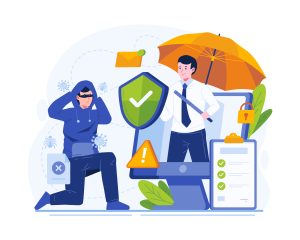Mantras such as ‘check, check and check again’ are often bandied around in the workplace, but what can we do to make sure our QA of everything we roll out is 100 per cent foolproof?
I recently bought a bottle of wine which the label described as ‘A crips dry white’. My friends and I thought this was hilarious; the point being that we all love to spot mistakes. Unsurprisingly, this isn’t the reaction we want our learners to have when they are completing our courses! So we’ve selected ten basic top tips to prompt the reviewer and help you to make sure nothing gets through your QA.
1. Check the textual, visual and functional
It can be easy to prioritise one aspect of an e-learning course, but they are all equally important. It can help to complete one QA focusing on the text, then another on the visual and so on.
2. Ten or 10?
Agree a rule, and then stick to it and make sure it’s always followed. We prefer to write out numbers up to nine, and then use the characters for all numbers that are higher.
3. Is the instruction text accurate and up to date?
Make sure the text aligns with what appears on the screen. If an image or interaction has been moved then the instruction text will need updating too.
4. ‘It’s’ or ‘its’?
‘It’s’ should be used when abbreviating ‘It is’ and ‘its’ can be used in all other instances. It’s worth double checking your use of this, as spell-check and autocorrect have been known to get it wrong.
5. The capitals conundrum
The appropriate use of capital letters has been the basis of many a debate between instructional designers. Decide on rules and then stick to them. If an icon reads ‘Next’ or ‘Resources’, then retaining the capital letters when the icon is mentioned in the main text will aid usability. The rules that you agree may have to be bent at times, as some companies like the use of capitals and some don’t. Always check the relevant branding guidelines to make sure you’re writing within them.
6. Which side of the pond?
Find out whether e-learning needs to be written in UK or US English and then check against common errors when completing a QA. For instance, have you used the correct version of ‘learnt’ vs. ‘learned’, or ‘preventive’ vs. ‘preventative’?
7. Always stir your coffee
For words such as ‘practice’ and ‘practise’ it’s an ‘s’ for a verb and a ‘c’ for a noun… so stir your coffee! If you’re writing in US English the rules will differ, so bear this in mind.
8. Don’t confuse your hyphens (-) and dashes (–)
A hyphen is shorter than a dash, and is used to compound words such as ‘e-learning’. A dash is longer and is used to separate clauses.
9. A company is singular
Companies, teams and departments should all be referred to in the singular. For instance, ‘Saffron has an e-learning blog’ and ‘The instructional design team has developed the storyboarding process.’
10. Does everything work?
Even if you are satisfied that everything is working as it should be, try to complete a final functionality QA before a release. This way you’ll pick up any issues that may have found their way into a course since your last review. Does everything click, drag and rollover as it should? Do all URLs and downloads work?





One Response